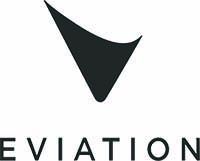
Standards for Green Aviation
Eviation Aircraft Ltd. has spent the past six years designing, developing, and building the world’s first zero-emission, all-electric regional aircraft. The company’s first craft set for commercialization is “Alice,” a nine-passenger craft with an initial range of 650 miles and a cruise speed of 240 knots. Cape Air became Eviation’s first commercial customer in the United States upon Alice’s debut at the 2019 Paris Air Show.
Alice was conceived to address two serious global challenges: 1) the high operating expenses faced by air carriers around the world and 2) reduction of the aviation industry’s growing carbon footprint from burning jet fuels. Aviation accounts for 2% of the world’s greenhouse gas emissions, which are expected to increase as air travel grows.
Amid a push by consumers for better service and cleaner technology, the aviation industry is moving swiftly toward electrification. According to a report from Global Market Insights, the worldwide electric aircraft market is expected to reach $45 billion by 2025.
On the cost side, electric-powered airplanes compete with petroleum-fueled planes on cost factors such as fuel and maintenance, while lowering air carriers’ operating expenses by up to 70%. With the cost of batteries decreasing and the elimination of fuel price volatility, Eviation aims to reduce the cost of commuting on Alice from a five-digit figure to the price of a bus ticket.
FOR YOU: Standardizing Space
To build the Alice aircraft, Eviation had to innovate airframe design, battery technology and integration, advanced lightweight materials, thermal management, and vehicle autonomy. After six years of design and collaboration with technical partners, Eviation completed the aircraft and focused next on testing Alice and obtaining certification from the Federal Aviation Administration (FAA) to operate the world’s first all-electric commuter plane.
Because electric airplanes are first-in-kind, the FAA does not have existing regulations for certifying all-electric aircraft and the new components required. So the question arose: How should Eviation proceed? The answer: ASTM International consensus standards.
In May 2018, the FAA announced that it would accept 30 published ASTM International consensus standards as “Means of Compliance” (MOC) for obtaining certification of small aircraft, called Part 23 airplanes. There are a total of 63 MOC components that aircraft must demonstrate they meet to be eligible, 46 of which were established by ASTM, according to an FAA announcement in the U.S. Federal Register. The FAA said its decision to accept ASTM standards was driven by a desire to “foster faster installation of innovative, safety-enhancing technologies into small airplanes while reducing costs for the aviation industry.”
The ASTM committee on general aviation aircraft (F44) established the accepted standards, which they developed with input from industry regulators, including the FAA and the European Union Aviation Safety Agency, aircraft manufacturers, and aviation consumers. These ASTM standards will serve as a blueprint for demonstrating compliance with FAA certification, a gating factor for the entire electric aviation sector.
To comply with FAA regulations and to meet its go-to-market timeline, Eviation has built ASTM standards into its certification plans for the Alice as a Part 23 airplane. The standards, published in 2018, include technical specifications for electric aircraft and related components, which is a major regulatory innovation and better suited for electric aircraft than older regulations that were written for conventional petroleum-fueled aircraft.
For new technologies, ASTM standards are the pathway by which companies like Eviation will expedite the certification process. Without these standards, additional time would be required for FAA approval of special conditions and work would proceed within regulations written for technology developed decades ago.
Standards such as terminology for aircraft (F3060) establish the basic terminology used in all light aircraft standards, providing a common language for all parties. This means technical teams at companies like Eviation have a universal understanding of the terms, making them clear for everyone.
The ASTM standards incorporated by reference by by the FAA include systems that are new to the FAA (and to aviation) such as: an electric plane’s energy system, power plant, and power plant integration. The specification for aircraft electric propulsion systems (F3239), for example, shows an equivalent to the federal register’s Part §23.2430, “Fuel systems,” and specifies the requirements for the energy system, allowing the development of the means of compliance and eventually enabling a clear path to the certification of the aircraft.

Company Snapshot
- Eviation Aircraft, Qadima, Israel, and transitioning to the greater Seattle area
- Eviation Aircraft develops and manufactures efficient electric aircraft in an effort to provide a fast, competitive, and sustainable solution to the on-demand mobility needs of people and goods.
- Number of Staff: 32
- Yearly Revenue: N/A
- Trading Areas: Global
-
Number of staff: 32
 SN Home
SN Home Archive
Archive Advertisers
Advertisers Masthead
Masthead RateCard
RateCard Subscribe
Subscribe Email Editor
Email Editor